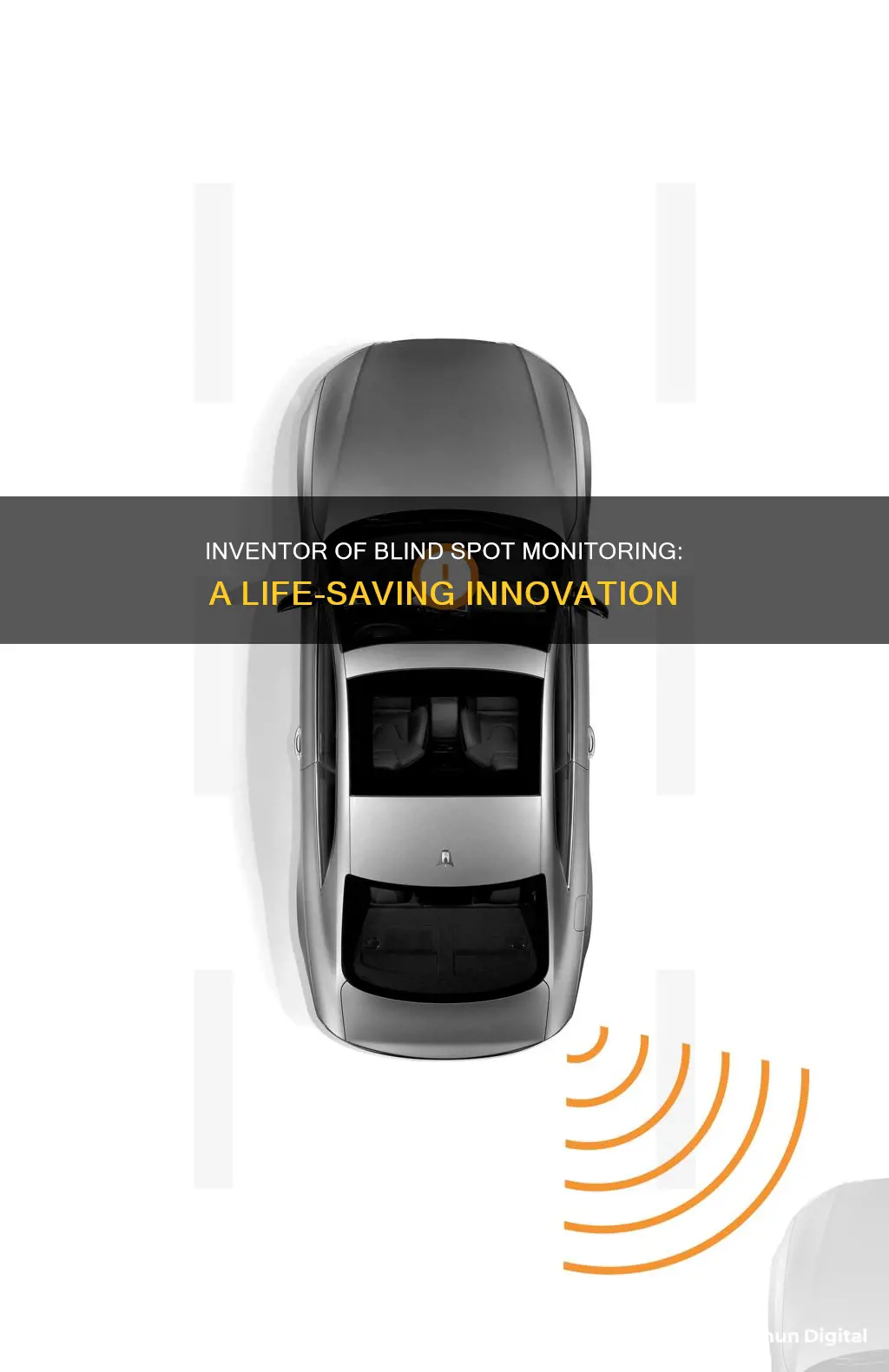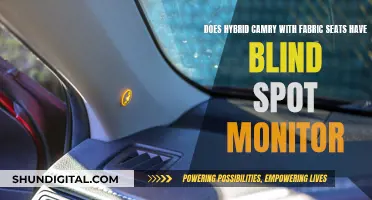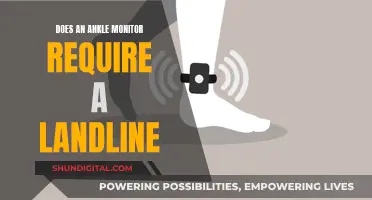
Blind spot monitoring systems are a safety feature in vehicles that use sensors, cameras, or radar technology to detect objects or vehicles in a driver's blind spot. The concept of blind spot monitoring was first introduced by George Platzer, an engineer at Ford Motor Company, in a 1995 paper. Platzer proposed a method of adjusting side mirrors to eliminate blind spots and also patented a blind spot monitoring system. However, the first commercial implementation of blind spot monitoring was by Volvo in 2003, with their Blind Spot Information System (BLIS) in the Volvo XC90 SUV. Since then, blind spot monitoring has become a popular feature offered by many automakers, providing drivers with visual, audible, or tactile warnings to help avoid collisions when changing lanes or reversing.
| Characteristics | Values |
|---|---|
| Inventor | George Platzer |
| Year of Invention | 1995 |
| Year of Implementation | 2001 or 2003 |
| First Implemented By | Volvo |
| First Implemented On | Volvo SCC concept car |
| First Commercial Implementation | Volvo XC90 SUV |
| Year of Commercial Implementation | 2003 |
What You'll Learn

George Platzer's 1995 paper
In 1995, George Platzer, an engineer working for the Ford Motor Company, wrote a paper that introduced the concept of blind spot detection. Platzer's paper, presented to the Society of Automotive Engineers, proposed a method for adjusting side mirrors to eliminate blind spots on the sides of a car. This method, however, had its challenges. Untrained drivers often struggled with finding the right mirror position, and even experienced drivers found it cumbersome.
Platzer's 1995 paper also introduced the idea of a blind spot monitor—a device that uses cameras and radar sensors to detect vehicles in the blind spot area and alert the driver with visual or audible signals. This invention was patented and later incorporated into various Ford Motor Company products. Platzer described the blind spot monitor as an "elegant and relatively inexpensive solution" to the problem of blind spots.
The paper's significance was overlooked in driver's education classes and by car manufacturers. It wasn't until 2003 that Volvo, then owned by Ford, introduced the first commercial implementation of blind spot detection in the Volvo XC90 SUV. This system, called BLIS (Blind Spot Information System), used optical sensors on the door mirror housings to detect objects in the blind spot and alert the driver.
While Platzer's 1995 paper laid the groundwork for the concept of blind spot detection, it was not until the early 2000s that the technology began to be adopted and further developed by automakers. Today, blind spot monitoring systems have become more advanced and widespread, with many car manufacturers offering their own versions, building upon the foundation laid by Platzer's initial idea.
Adjusting Your ASUS Designo MZ27AQ Monitor Like a Pro
You may want to see also

Volvo's BLIS
The system is designed to react when your car is being overtaken by other vehicles or when another vehicle is approaching at speed. BLIS can now also include Steer Assist, which activates when the driver attempts to change lanes and there is a risk of collision, steering the car back into its original lane. Cross Traffic Alert (CTA) is another added feature, which detects vehicles, and sometimes pedestrians or objects like bicycles, crossing behind the car while reversing. The final feature is Rear Collision Warning (RCW), which is activated when a vehicle is rapidly approaching from behind.
Volvo won an AutoCar Safety and Technology award for the introduction of BLIS, which has since been adapted by Ford for its Ford, Lincoln, and Mercury brands.
Monitor Stands: Where to Buy for Your Setup
You may want to see also

Radar-based sensors
The advanced variant of the blind spot detection system utilises two radar sensors concealed in the rear bumper—one on the left and one on the right. These sensors monitor the area behind and alongside the car, and the data is processed by powerful control software. This software creates a comprehensive picture of all traffic in the vicinity, allowing for the early detection of fast-approaching vehicles before a lane change. This advanced system surpasses the sensing range of ultrasonic sensors, enhancing safety and convenience.
Finding the Perfect 1080p Monitor: Maximizing Your Viewing Experience
You may want to see also

Visual and audible alerts
Blind-spot monitoring systems are a safety feature designed to help drivers avoid collisions when changing lanes or merging on busy roads. The technology was first introduced in 2003 by Volvo, which developed the Blind Spot Information System (BLIS) for its 2003 Volvo XC90 SUV.
Volvo's BLIS used cameras and radar sensors mounted on the door mirror housings to monitor the blind spot area for impending collisions. When a vehicle was detected in the blind spot, the system alerted the driver with a visual warning in the mirror, indicating that it was not safe to change lanes.
In addition to visual alerts, blind-spot monitoring systems also employ audible warnings. These can include alarms, buzzers, or tones that are activated when the turn signal is used while a vehicle is in the blind spot. The combination of visual and audible alerts ensures that drivers receive notifications through multiple sensory channels, increasing the likelihood of prompt recognition and response.
While visual and audible alerts are the most common forms of notification, some blind-spot monitoring systems incorporate additional features for a more comprehensive sensory experience. For example, some systems include tactile notifications, causing the driver's seat or steering wheel to vibrate when a vehicle enters the blind spot. This feature is especially useful in noisy environments or when drivers have their audio system playing at a high volume, as it provides a physical sensation that is difficult to overlook.
The effectiveness of blind-spot monitoring systems in reducing accidents has been significant. According to the Insurance Institute for Highway Safety (IIHS), blind spots contribute to approximately 350,000 accidents annually. However, with the implementation of blind-spot monitoring technology, it is estimated that these systems reduce blind-spot crashes by 14%, preventing about 50,000 accidents each year.
Unlocking Your Monitor's Potential: Uncapping FPS on ASUS Displays
You may want to see also

Limitations of the technology
Blind spot monitoring systems have become increasingly common in modern vehicles, from luxury cars to economy models. While these systems are designed to improve safety, there are some limitations to the technology.
Firstly, blind spot monitoring systems are primarily designed to detect vehicles, particularly those approaching from adjacent lanes. As such, they may not detect smaller vehicles such as motorcycles, bicycles, or even pedestrians. This limitation arises from the system's focus on monitoring for larger objects with similar speed profiles to other cars. This means that cyclists, pedestrians, and motorcyclists are at risk of being overlooked by the system, potentially leading to accidents involving more vulnerable road users.
Secondly, blind spot monitoring systems are typically not designed to detect stationary objects. This includes objects such as guard rails, poles, and stopped vehicles. The system's focus on moving vehicles means that stationary objects are not considered a potential hazard. This could be problematic when driving in tight spaces, such as parking garages, where stationary objects are common and collisions with them could still cause damage to the vehicle.
Thirdly, not all blind spot monitoring systems are created equal. While some advanced systems may include parking assist and collision warning functions, these are not standard features across all implementations. Basic blind spot monitoring systems may only provide a visual or audible warning, leaving it to the driver to take evasive action. More advanced systems may actively intervene by applying brakes or steering the vehicle back into the centre of the lane. However, these more sophisticated functions are often limited to higher-end vehicles, leaving drivers of more affordable cars with less comprehensive protection.
Finally, blind spot monitoring systems rely on sensors and cameras to detect objects in the vehicle's blind spot. While these sensors are generally weather-resistant, they can still be affected by extreme weather conditions, such as heavy rain or snow, which may reduce their effectiveness. Additionally, the sensors may not function properly when driving through certain structures, such as tunnel walls, as they can mistake the wall for an approaching vehicle, leading to false alarms.
Despite these limitations, blind spot monitoring systems have been shown to improve safety and reduce accidents, particularly those involving lane changes. However, it is important for drivers to be aware of the limitations of the technology and not become overly reliant on it, as it should be used to complement safe driving practices and not replace them.
Monitoring Data Usage: Track Device Consumption
You may want to see also







